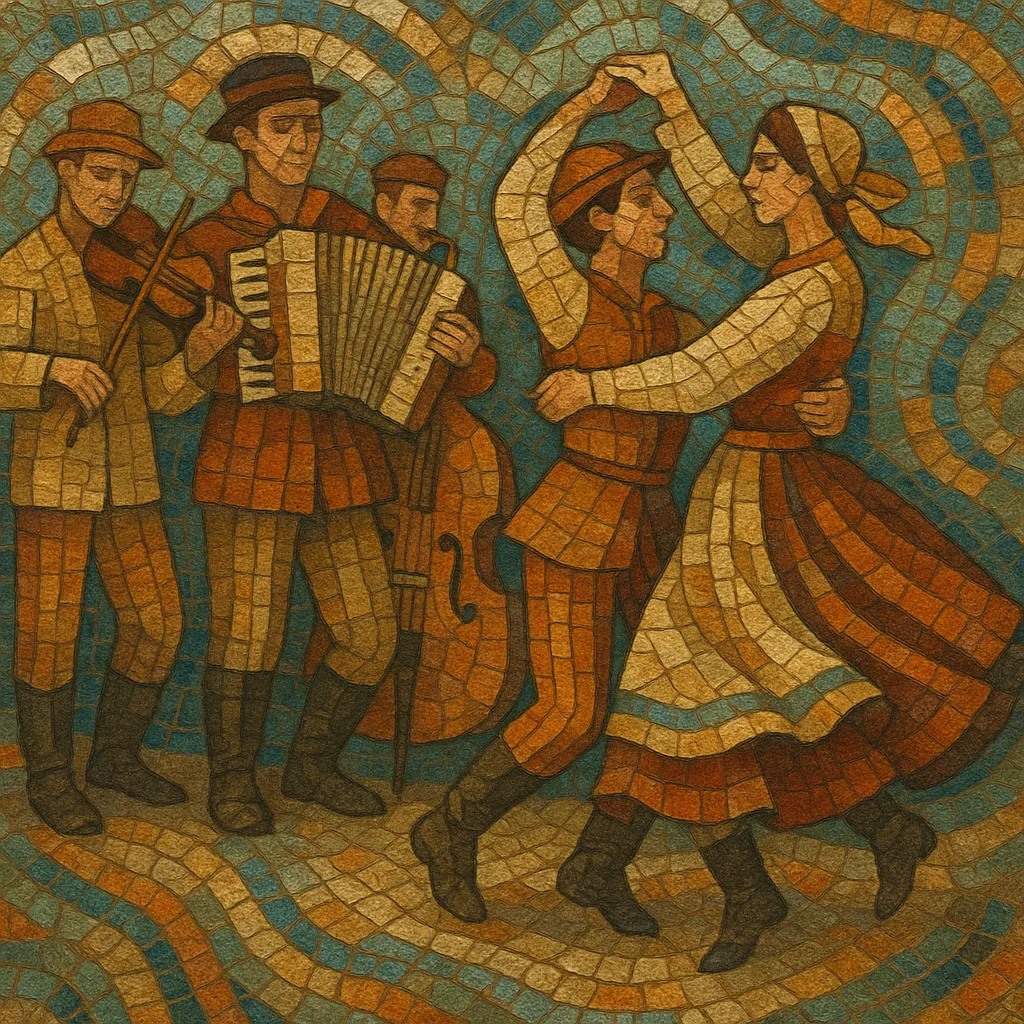Oberek is a fast, spinning Polish folk dance and musical form in triple meter, considered the most vigorous of Poland’s five national dances. Its name derives from the Polish verb “obracać się,” meaning “to spin,” reflecting the dance’s whirling turns and athletic figures.
Musically, oberek is performed in 3/4 time with lively tempos and characteristic mazurka-type accents that often stress the second or third beat. Traditional village bands (kapela) feature fiddles as lead melody instruments, supported by basy (a rustic bass), accordion, clarinet, and a small drum. The melodies favor ornamented, modal-inflected phrases over simple I–IV–V harmonies, producing an exuberant, propulsive feel suited for social dancing.
Oberek emerged in the Polish countryside—especially in the Mazovia region—during the 19th century, growing out of older village dances and the mazurka family. Its rural function was primarily social: a lively, communal dance powered by small string-led bands. The dance’s defining feature was spinning, with couples executing rapid turns and improvised figures.
By the late 19th and early 20th centuries, oberek, alongside polonaise, mazurka, kujawiak, and krakowiak, was codified as one of Poland’s national dances. Folklorists, collectors, and choreographers preserved and stylized its steps and melodies, bringing them into concert settings and educational curricula. In the post–World War II era, state ensembles such as Mazowsze and Śląsk popularized oberek at home and abroad, showcasing regional costumes and choreographed versions on large stages.
Polish emigrant communities, especially in the United States, integrated oberek into the Polish-American dance band tradition, where it appears alongside polkas and waltzes. In the late 20th and early 21st centuries, Poland’s folk revival and world-fusion scenes revitalized village-style obereks, with ensembles researching archival recordings, reviving traditional instrumentation, and blending the style with modern folk, folk-rock, and world-music aesthetics.


